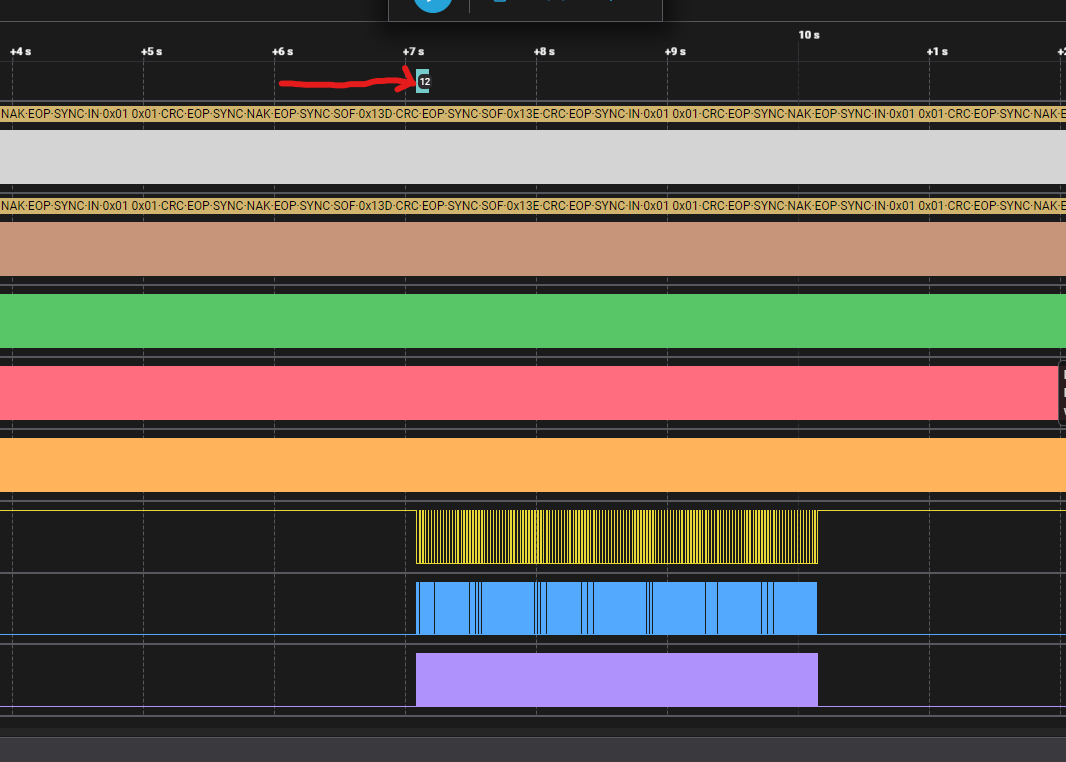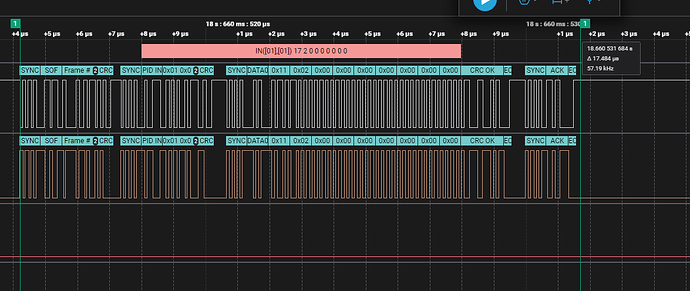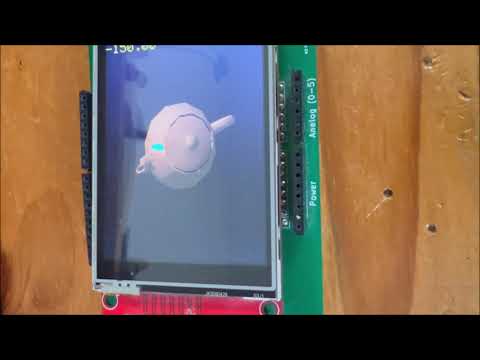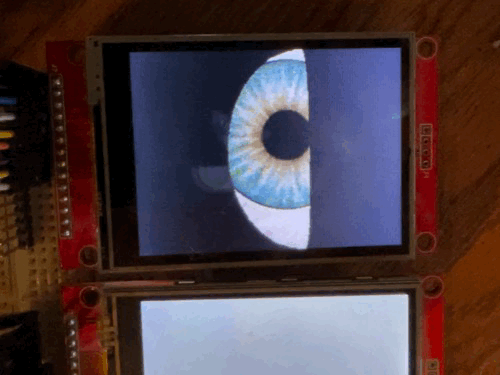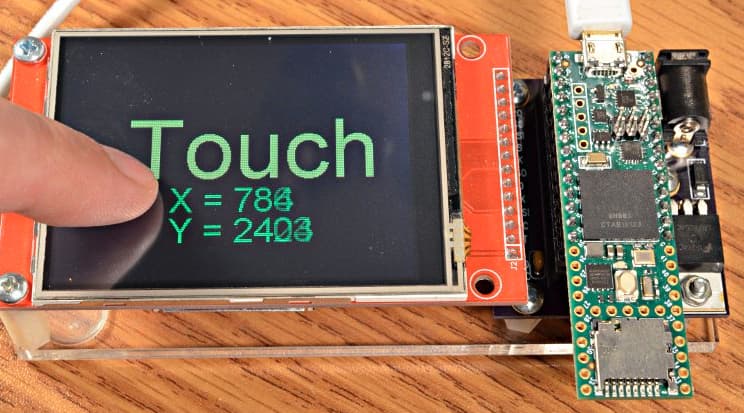@Merlin513 and @BobTheDog - I was curious about the timing differences when the USB is in use and when it is not...
So hooked up Logic Analyzer probes to both USB pins, plus some of the SPI pins, did not do MISO nor DC pin as I wanted some extras to monitor when USB things are being called.
In this case I am using a sketch and device code I was porting over from our Wacom tablet library... This case is the tablet_viewer sketch.
Here is an area of trace when the screen is updated... Which happens if we receive new data from the tablet:
Top two lines are the USB.
The last three are the Display (CS, MOSI, SCK)
The Orange line (channel 3) is the time that an Endpoints call back is being called
Red(2) - is when the USB Task is active
Green(5) - is when the TransferComplete is being processed (Callback from ISR?)
When we zoom out we see that all of our stuff is getting called a lot of the time even though the only time we are actually receiving new data is just in the area of the
area I sort of pointed to:
Also sort of interesting is when you zoom in on receiving one transfer in from the tablet
You can see it takes 3 transfer cycles or 2+ms to complete the transfer!
I would have hoped it was all completed within one cycle... Will try to capture something similar with the tabke us connected to something else.

